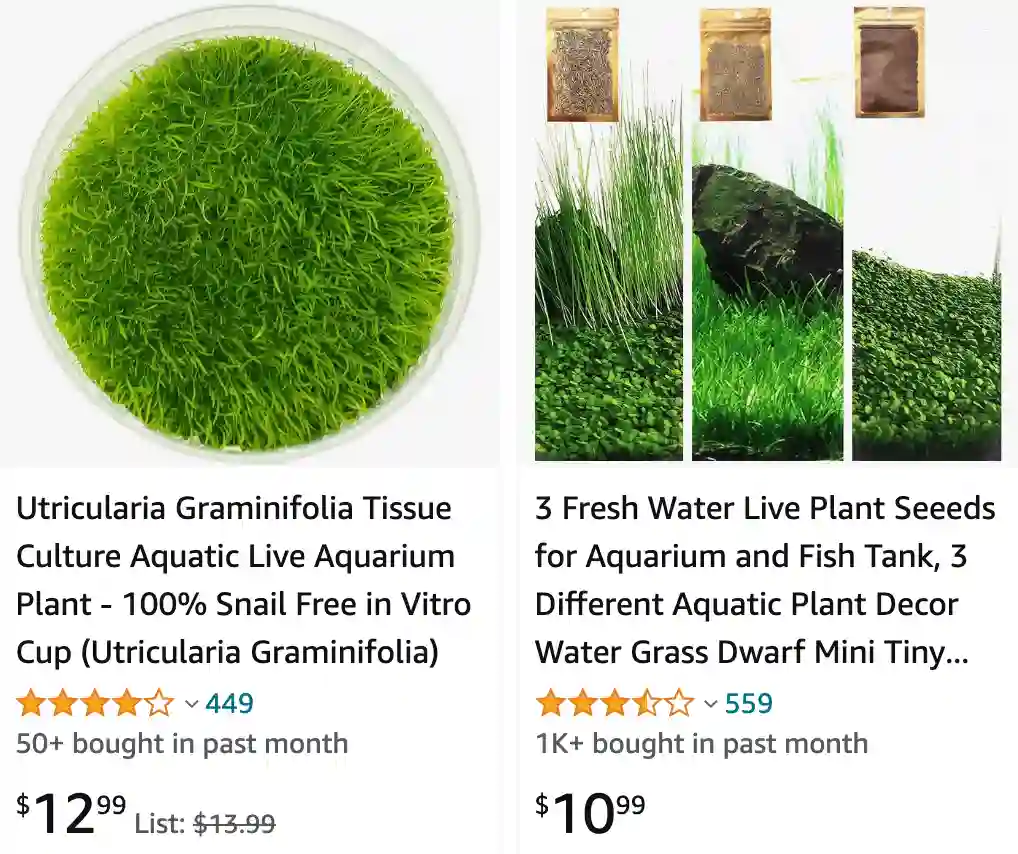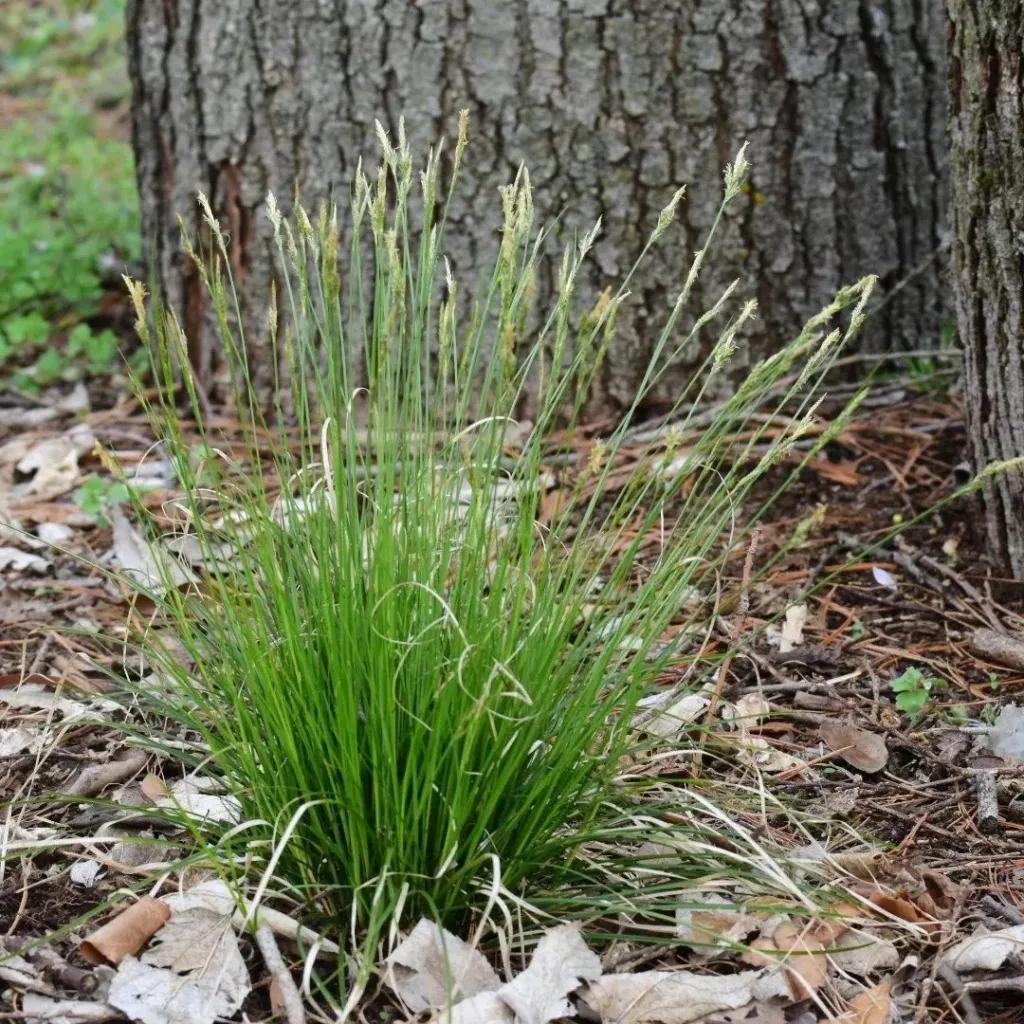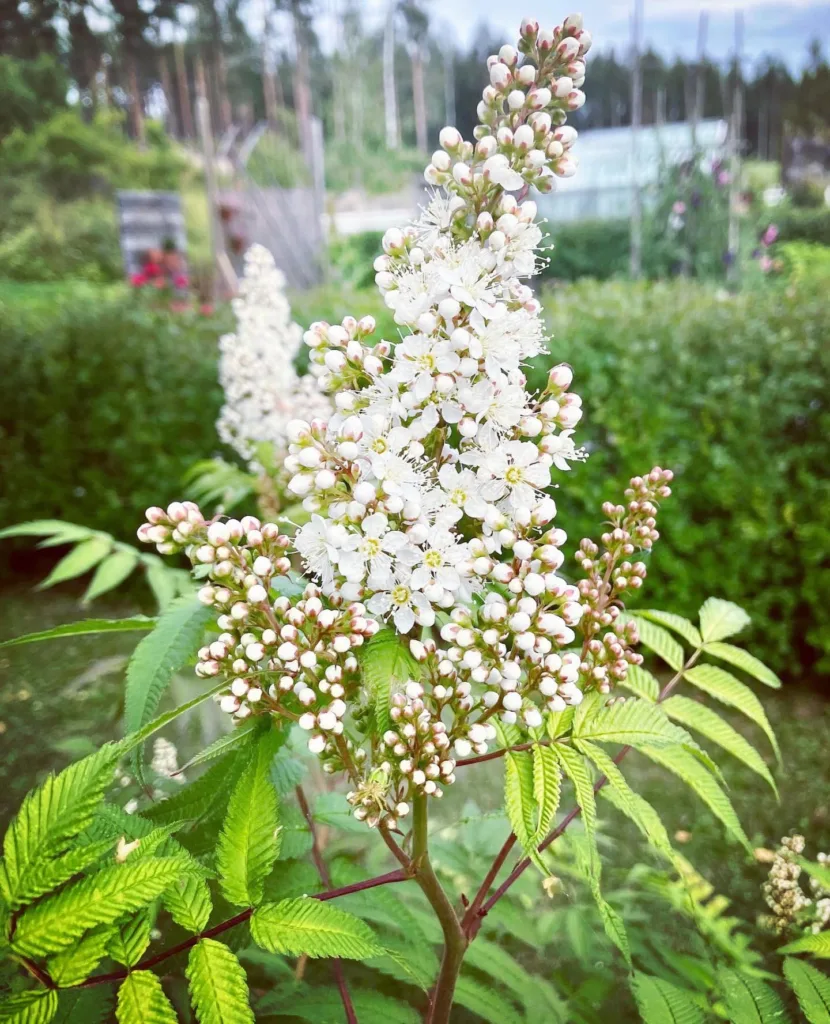
How to grow Utricularia graminifolia?
Utricularia graminifolia, often known as the Bladderwort or Grassleaf Bladderwort, is a beautiful carpeting plant prized by aquascapers for its lush green, foreground presence. Here’s a guide on how to cultivate it in your aquarium:
287 Species in Genus Utricularia
Water Conditions:
- Temperature: Tropical, ideally between 68-82°F (20-28°C). Utricularia graminifolia won’t tolerate cooler temperatures.
- Water Parameters: Prefers soft, acidic water with a pH of 5.0-6.5 and low KH (carbonate hardness). If your tap water is hard or has a high KH, consider using RO (reverse osmosis) water or using products to soften and acidify the water.
- Light: Moderate to low light. While it can survive in higher light settings, too much light can make it leggy and less attractive. Aim for 10-14 hours of light per day on a timer.
Planting:
- Substrate: While Utricularia graminifolia doesn’t necessarily need substrate to root, a well-draining aquarium soil like aqua soil, sand, or gravel is recommended. Peat placed at the bottom of the tank can also be beneficial.
- Planting Technique: You can break the plant into smaller portions and plant the individual leaves deep into the substrate, ensuring only a small tip of each plant is visible. Alternatively, you can anchor them with gravel, coir discs, or stone wool until they establish themselves.
Care:
- Nutrients: Utricularia graminifolia doesn’t require a lot of nutrients. In fact, it can benefit from a nutrient-poor environment.
- CO2 Injection: CO2 injection can be beneficial for supplying carbon and keeping the plant compact and low-growing, especially in tanks with moderate to higher lighting.
- Water Changes: Regular water changes are crucial to maintain good water quality and remove any waste products.
- Trimming: You can trim Utricularia graminifolia as needed to maintain its desired shape and prevent it from overtaking the foreground.
Important Considerations:
- Tank Stability: Utricularia graminifolia is best introduced to a mature and biologically stable tank. Avoid planting it in a newly set up aquarium as it may struggle in an uncycled environment.
- Carnivorous Plant: Be aware that Utricularia graminifolia is a carnivorous plant and may trap small organisms like nematodes in its tiny bladders. This is usually not a problem in a well-balanced aquarium ecosystem.
Does Utricularia graminifolia need CO2?
In my experience, providing CO2 supplementation has significantly enhanced the growth of Utricularia graminifolia. While it can survive without CO2 injection, I’ve noticed that adding CO2 has resulted in faster and lusher growth. However, it’s essential to strike a balance and not overdo it, as excessive CO2 can lead to algae problems. I use a CO2 system with a diffuser to ensure that the plants receive a steady supply of carbon dioxide, which has made a noticeable difference in their health and vibrancy.
How to feed Utricularia graminifolia?
Feeding Utricularia graminifolia has been an interesting aspect of its care. Being a carnivorous plant, it relies on capturing small organisms for nutrients. I’ve observed that it primarily feeds on microorganisms like protozoa and rotifers that inhabit the substrate. To facilitate this, I avoid using any chemical fertilizers that might harm the delicate balance of the tank’s ecosystem. Instead, I rely on organic matter and occasional feeding with live or freeze-dried organisms to supplement its diet.
What to feed Utricularia graminifolia?
When it comes to feeding Utricularia graminifolia, I’ve found that providing small live prey or freeze-dried alternatives works best. In my tank, I introduce small organisms like Daphnia, Cyclops, or even newly hatched brine shrimp. These organisms not only provide essential nutrients but also stimulate the plant’s trapping mechanism, keeping it active and healthy. However, it’s crucial to avoid overfeeding, as excess food can decompose and compromise water quality. Finding the right balance and observing the plant’s response has been key to ensuring its well-being.
If i die, water my plants!



